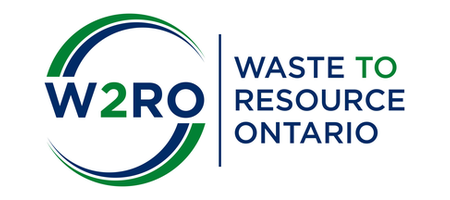-
Excess Soils
Ontario requires clear roles, responsibilities and tracking to effectively manage excess soils.
Make it Easier & Safer to Reuse Excess Soil
W2RO supports establishing clear rules and regulations that provide better management and information monitoring of excess soils generated in Ontario. Excess soil management policies should not preclude the beneficial reuse designation of used soils as landfill cover. In the matter of licensed landfills, excess soil has a beneficial re-use both as a capping material during closure activities, and can also be reclaimed as daily soil cover for landfills – with significant financial savings for both private sector and municipal landfill operators.
Contaminated soil classifications
Used, excess soils are currently not properly characterized prior to or during removal, which results in very limited information being included site condition documents. W2RO recommends clear, consistent rules across the province on different soils, categories of contamination, and how they are managed. Qualified Persons (QP) should be required to prepare an Excess Soil Management Plan (ESMP), fully documenting the characterization of soil contaminants and the removal site’s previous use. Re-use sites should be required to receive test reports for the soil they will receive, including soil test data and soil quality, before any excess soil is deposited at the reuse site.
Uniform tracking and monitoring system
Provincial regulation of excess soil re-use and disposal should uphold the basic principle that volume going into receiving sites must equal the volume going out of removal sites. Each load of excess soil should be required to be tracked to its final destination. Excess Soil Management Plans (ESMPs) and related information should be filed in a central, provincial registry.
W2RO supports the management of clean soils to reuse sites with a minimum of regulatory impediment, but our sector also strongly supports that contaminated soils must be identified, and the appropriate (waste) management option determined, relative to landfill or soil processing options. Rules for sampling and testing should be clearly specified in the Ministry of Environment, Conservation and Parks’ “Rules for On-Site and Excess Soil Management”.
Accurately characterizing soils at the point of generation is critical to determining the appropriate management option and final disposition option. This is fundamental to the success of any soil management system. There should be no risk that clean and contaminated soils on site are ‘mixed’ into a stockpile before sampling, or that sampling in situ can miss areas of contaminated soil on the site. The lack of prescriptive and concise requirements for sampling and analysis is the fundamental flaw in the current management system. This flaw contributes to contaminated soil being ‘mixed’ with clean soil, and soil being disposed of in locations that are not appropriate.
Municipal by-laws
Many smaller municipalities lack the resources to develop and enforce effective by-laws related to excess soil movement. The Ministry of Environment, Conservation and Parks should provide adequate guidance and support for municipalities to develop and enforce a compliance framework.
Generators and owners of source sites should bear responsibility for ensuring accurate information on the record of site condition and soil transfer manifests. The Ministry of the Environment, Conservation and Parks should be responsible for keeping records of approved clean-fill sites.
Documents & News
On December 4, 2019: the Minister of the Environment, Conservation and Parks announced that the government is moving forward with finalizing the excess soil management regulations under the Environmental Protection Act.
The approved Regulation, O. Reg. 406/19: ON-SITE AND EXCESS SOIL MANAGEMENT, filed December 4, 2019 under Environmental Protection Act, R.S.O. 1990, c. E.19, can be found here: https://www.ontario.ca/laws/regulation/r19406
W2RO’s comments submitted during the consultation period can be found here: https://ero.ontario.ca/comment/32410

